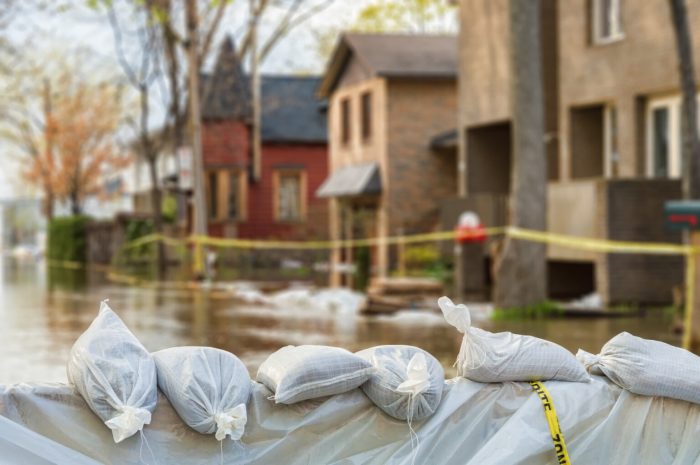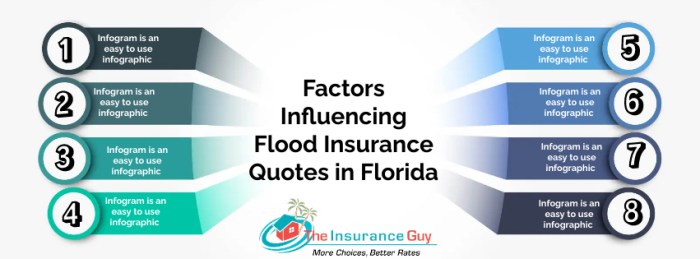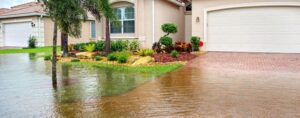
Flood insurance cost calculator is your go-to tool for navigating the often confusing world of flood insurance. With rising concerns about climate change and extreme weather events, understanding how to calculate flood insurance costs has never been more crucial. This guide will walk you through the various factors affecting pricing and how to leverage calculators to get an accurate estimate tailored to your specific needs.
From regional cost variations to the implications of property value and flood zone designations, we’ll explore the elements that influence your premiums. Additionally, we’ll show you how to effectively use a flood insurance cost calculator and provide comparisons of different online calculators available, ensuring you’re well-equipped to make informed insurance decisions.
Understanding Flood Insurance Costs

Flood insurance is an essential safeguard for homeowners in flood-prone areas. The cost of flood insurance can vary significantly based on several factors, making it crucial for property owners to understand what influences these prices. From geographical location to specific property characteristics, various elements play a role in determining the overall cost of flood insurance.Numerous factors influence flood insurance pricing, including the property’s location, elevation, and the flood zone designation assigned to the area.
The Federal Emergency Management Agency (FEMA) establishes flood zones that indicate the likelihood of flooding in different regions. Higher-risk areas typically see elevated pricing, while lower-risk zones may enjoy more affordable rates. Additionally, properties with a higher market value or those that are larger in size tend to incur higher premiums.
Factors Influencing Cost
Understanding the specific elements that drive flood insurance costs can help homeowners make informed decisions. Here are the key factors that can impact the pricing:
- Geographical Location: Properties situated in high-risk flood zones face higher premiums. For example, homes in coastal areas or near rivers are generally more vulnerable to flooding.
- Elevation of Property: Elevated homes are often cheaper to insure. A property built above the Base Flood Elevation (BFE) may qualify for reduced rates.
- Property Value: Higher-valued properties naturally incur higher premiums due to the increased risk and potential payout involved in the event of a claim.
- Building Type: The construction type, including materials and age of the building, can influence the cost. For example, newer homes built with flood-resistant materials may qualify for discounts.
- Flood Zone Designation: FEMA assigns flood zones based on risk levels, impacting the insurance premium. Properties in Zone A or V (high-risk zones) typically pay more than those in Zone X (low-risk).
Regional Cost Breakdown
Flood insurance costs vary widely from one region to another, often reflecting the local climate and flood history. For example, in states like Florida, where hurricanes are prevalent, the average annual premium can range from $1,000 to $2,500. In contrast, areas like the Midwest, where flooding is less frequent, may see premiums as low as $500 to $1,200.
| Region | Average Annual Premium | Common Flood Zones |
|---|---|---|
| Florida | $1,000 – $2,500 | Zone A, Zone V |
| Midwest | $500 – $1,200 | Zone X |
| California | $700 – $1,500 | Zone A, Zone D |
| New York | $800 – $1,800 | Zone A, Zone V |
Understanding your flood zone designation can significantly influence your insurance costs and help in budgeting for coverage.
Utilizing a Flood Insurance Cost Calculator

Utilizing a flood insurance cost calculator can significantly simplify the process of estimating your potential flood insurance premiums. This tool allows homeowners to input specific data regarding their property and receive a personalized estimate based on various risk factors, local regulations, and coverage options.To effectively use a flood insurance cost calculator, you will typically need to follow a series of straightforward steps.
First, gather necessary information about your property, including its location, elevation, and proximity to water bodies. Next, access a reliable flood insurance cost calculator online. Once there, enter the required information accurately, as this will directly impact your premium estimate. After inputting your data, the calculator will provide you with an estimate of your insurance costs, often breaking down the figures based on different coverage levels.
Impact of Different Inputs on Premium Estimates
The inputs you provide to a flood insurance cost calculator can dramatically alter the estimated premium. Factors such as the elevation of your home, the flood zone designation, and the desired coverage amount play crucial roles. Here are some examples to illustrate how variations in these inputs can influence your estimated premium:
Elevation
Homes situated above the Base Flood Elevation (BFE) typically enjoy lower premiums. For instance, a home at an elevation of 8 feet may receive a lower quote compared to a home at 5 feet.
Flood Zone
Properties located in high-risk flood zones (like Zone A) face higher premiums than those in lower-risk areas (like Zone X). A home in Zone A might see annual premiums of $1,000 or more, while a similar home in Zone X could be under $500.
Coverage Amount
Increasing your desired coverage limit can raise your premium. If you choose a coverage limit of $250,000 for your structure, the premium might be around $1,200, whereas opting for $500,000 could push that estimate closer to $2,000.Understanding how these inputs interact can help homeowners make informed decisions regarding their flood insurance needs.
Comparison of Various Online Calculators
When looking for a flood insurance cost calculator, it’s essential to choose one that provides accurate and comprehensive estimates. Below is a comparison of some popular online calculators, highlighting their features and usability:
| Calculator | Features | Usability |
|---|---|---|
| National Flood Insurance Program (NFIP) | Official source, risk zone maps, comprehensive data | User-friendly, provides extensive guidance |
| FEMA Flood Map Service Center | Access to flood maps, elevation certificates | Interactive interface, requires some navigation |
| Private Insurance Company Calculators | Customizable coverage options, additional discounts | Varies by provider, often straightforward |
Selecting the right calculator can make a difference in understanding your flood risks and insurance costs. Be sure to input accurate information and compare estimates from different calculators to get the most reliable insights.
Related Insurance Types
Flood insurance serves a unique role in protecting assets from water-related damages, but it is just one piece of the broader insurance landscape. Understanding its relationship with other insurance types, such as dental and disability insurance, can provide deeper insights into risk management and financial planning. Each insurance type has its distinct purpose, benefits, and structure, making comparisons both interesting and informative.
Comparison of Flood Insurance and Dental Insurance
Flood insurance and dental insurance, while both designed to mitigate risks, cater to very different concerns. Flood insurance protects property owners from financial losses due to flooding, typically as a result of natural disasters. In contrast, dental insurance is focused on maintaining oral health through preventive care, routine check-ups, and procedures.Both insurances share the principle of risk management, where policyholders pay premiums in exchange for coverage against potential financial burdens.
However, the following key aspects differentiate them:
- Coverage Scope: Flood insurance specifically covers property damage from flooding, whereas dental insurance covers procedures related to oral health, like cleanings, fillings, and extractions.
- Claim Structure: Flood insurance claims tend to involve substantial assessments and potentially long processing times, depending on the severity of the damage. Dental claims usually involve straightforward reimbursements for services rendered.
- Regulatory Differences: Flood insurance is often subsidized by government programs like the National Flood Insurance Program (NFIP), while dental insurance operates primarily through private insurers without government intervention.
Structure of Disability Insurance Compared to Flood Insurance
Disability insurance and flood insurance are structured differently, each addressing specific types of risk. Disability insurance provides income replacement for individuals unable to work due to injury or illness, ensuring financial stability during challenging times. Flood insurance, on the other hand, protects physical property from water damage.The differences in structure can be Artikeld as follows:
- Benefit Focus: Disability insurance focuses on income protection, paying out benefits based on income levels, while flood insurance typically pays for repairs or replacement of damaged property.
- Policy Duration: Disability insurance policies can last for years, often until retirement age, whereas flood insurance covers specific incidents over a defined policy term.
- Premium Determination: Premiums for disability insurance are often based on the insured’s occupation and health, while flood insurance premiums are influenced by factors such as property location and flood zone designations.
Flood Insurance in the Context of Health Insurance
Flood insurance occupies a unique position within the broader insurance landscape, particularly when juxtaposed with health insurance. Most notably, flood insurance focuses on safeguarding property, whereas health insurance is centered on covering medical expenses resulting from health-related issues.The interplay between these insurance types can be illustrated in several ways:
- Financial Planning: Both insurances are crucial components of a comprehensive financial strategy, ensuring that individuals are protected against unexpected expenses, whether from property damage or medical emergencies.
- Risk Assessment: When purchasing flood insurance, homeowners must assess their property’s risk of flooding, similar to how individuals evaluate health risks when selecting health insurance plans.
- Policy Integration: Some homeowners may opt for bundled insurance policies that include both flood and health insurance, potentially leading to cost savings and simplified claims processes.
Outcome Summary
In conclusion, mastering the use of a flood insurance cost calculator can empower you to make savvy choices when it comes to safeguarding your property. Whether you’re looking to understand the factors that determine your premiums or seeking the best calculator options, being informed is key. Don’t leave your financial security to chance; leverage the insights from this guide and take charge of your flood insurance journey.
FAQ Insights
What factors affect flood insurance costs?
Factors include property location, value, flood zone designation, and local risk assessments.
Can I use a flood insurance cost calculator for any property?
Yes, as long as the calculator is designed to accommodate various property types and locations.
How often should I update my flood insurance calculation?
It’s recommended to update your calculations annually or after significant changes to your property or local flood risk.
Are there discounts available for flood insurance premiums?
Yes, many insurers offer discounts for features like flood-proofing measures or bundling insurance policies.
How accurate are online flood insurance calculators?
While they provide estimates based on input data, actual costs may vary, so it’s best to consult with an insurance agent for precise quotes.







